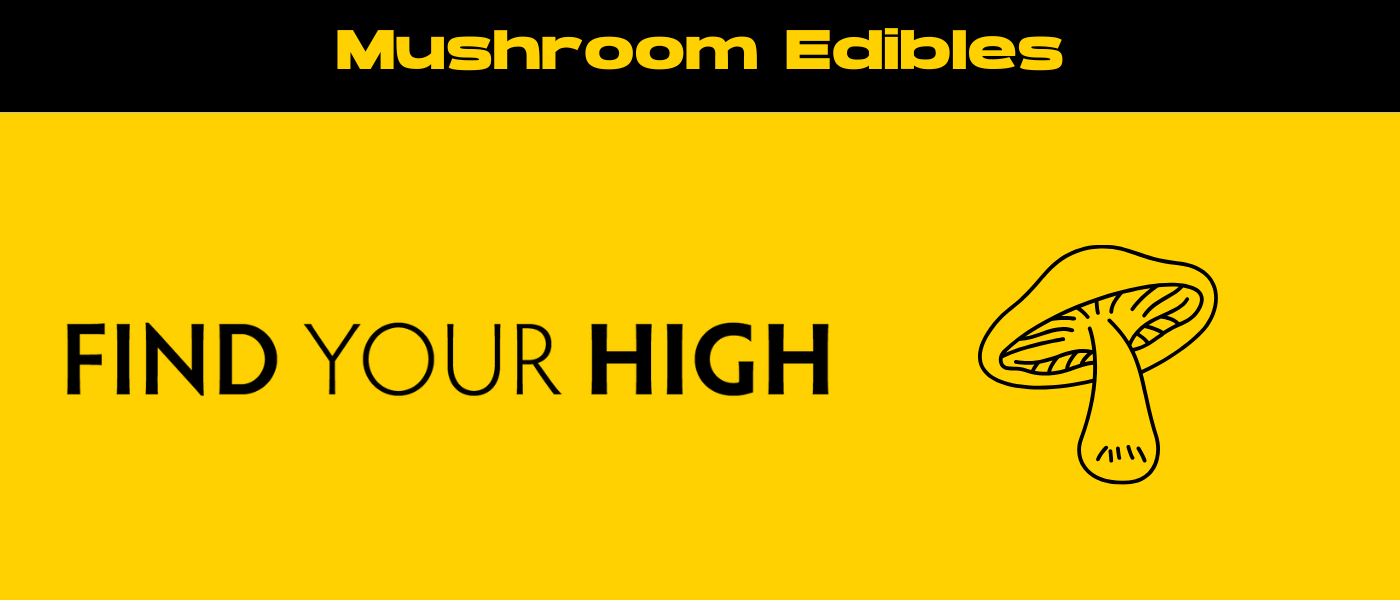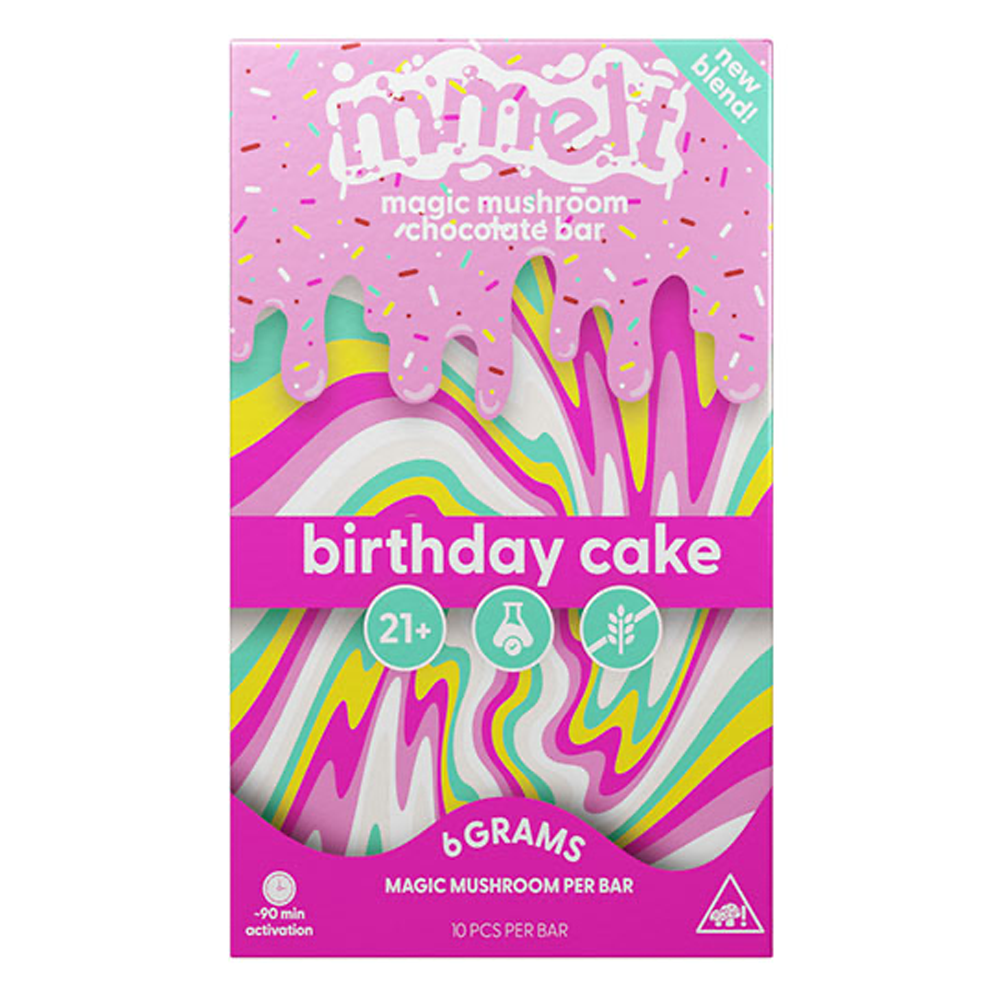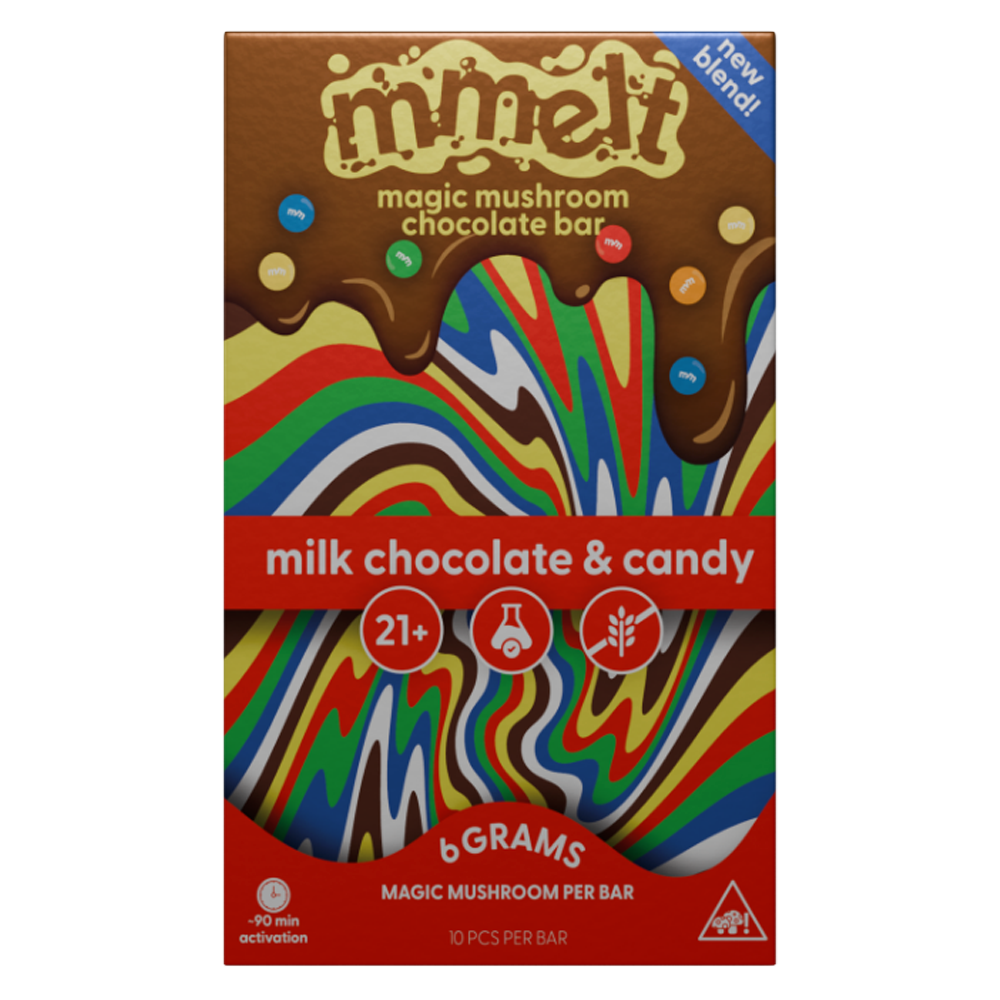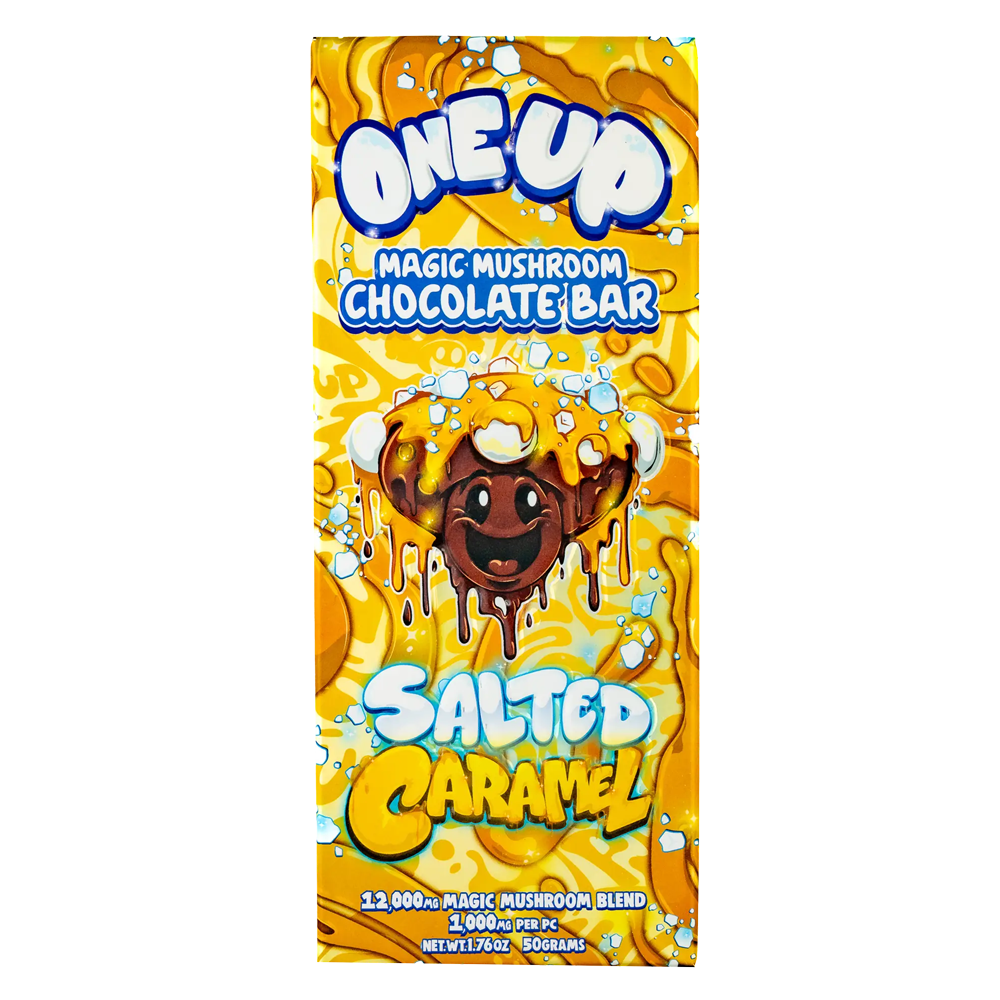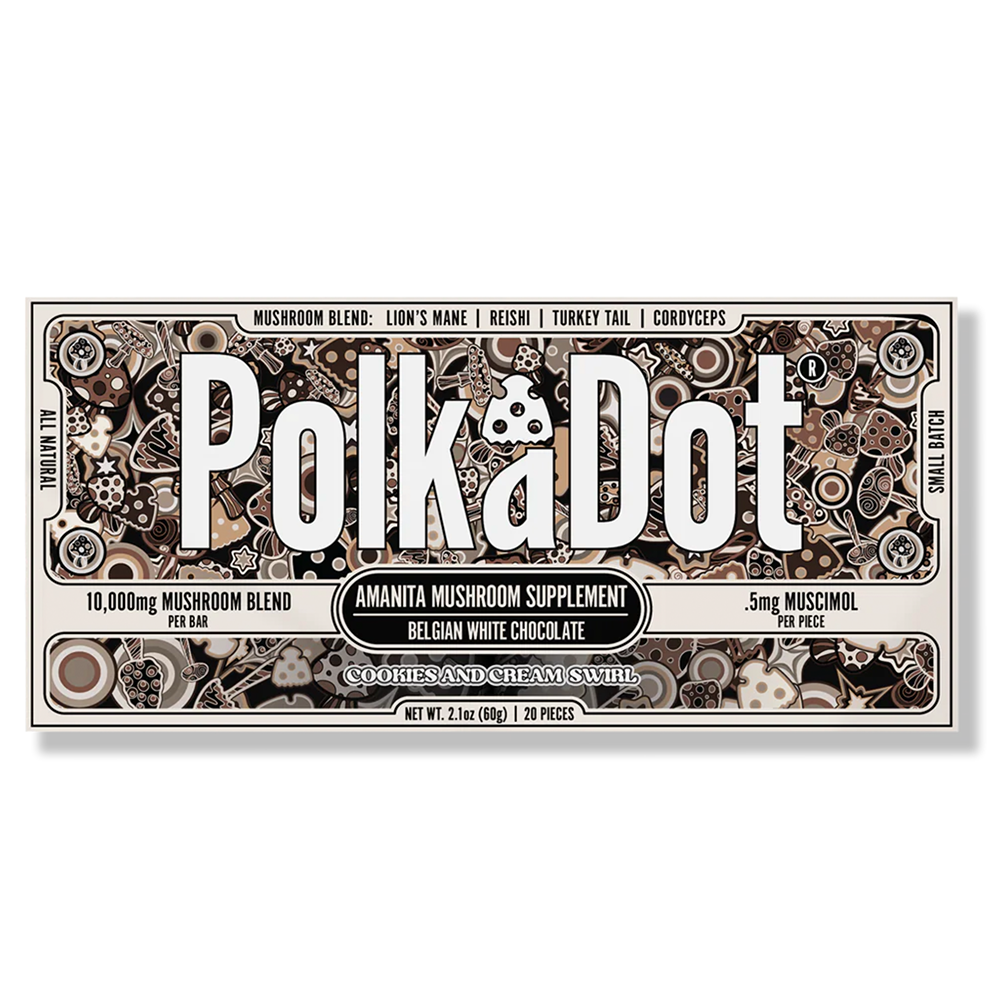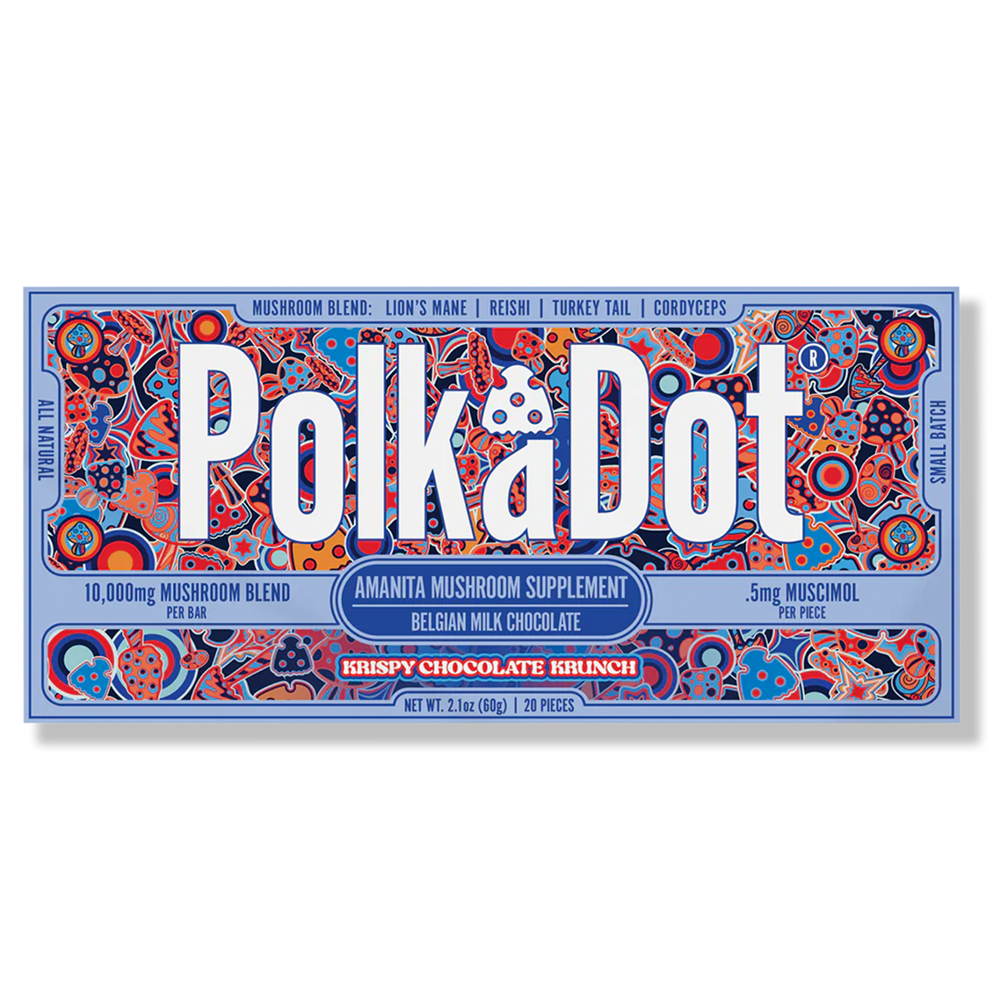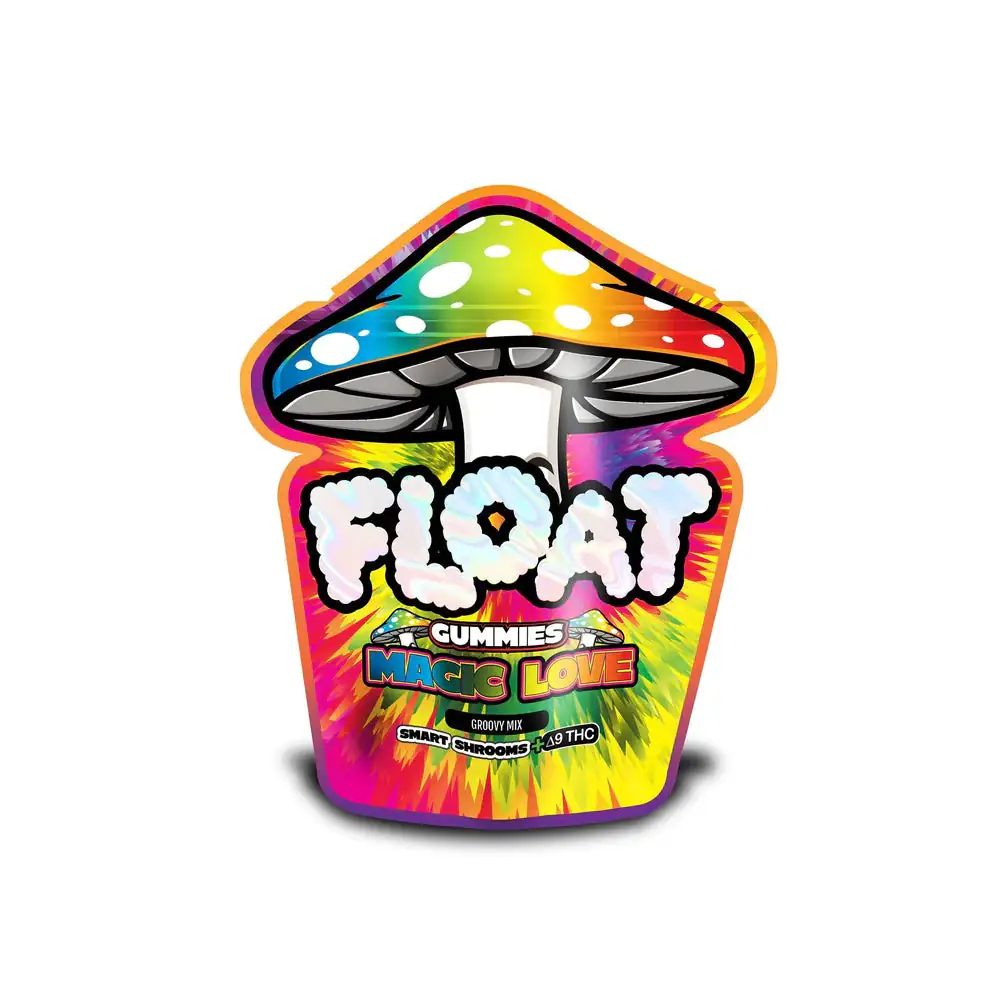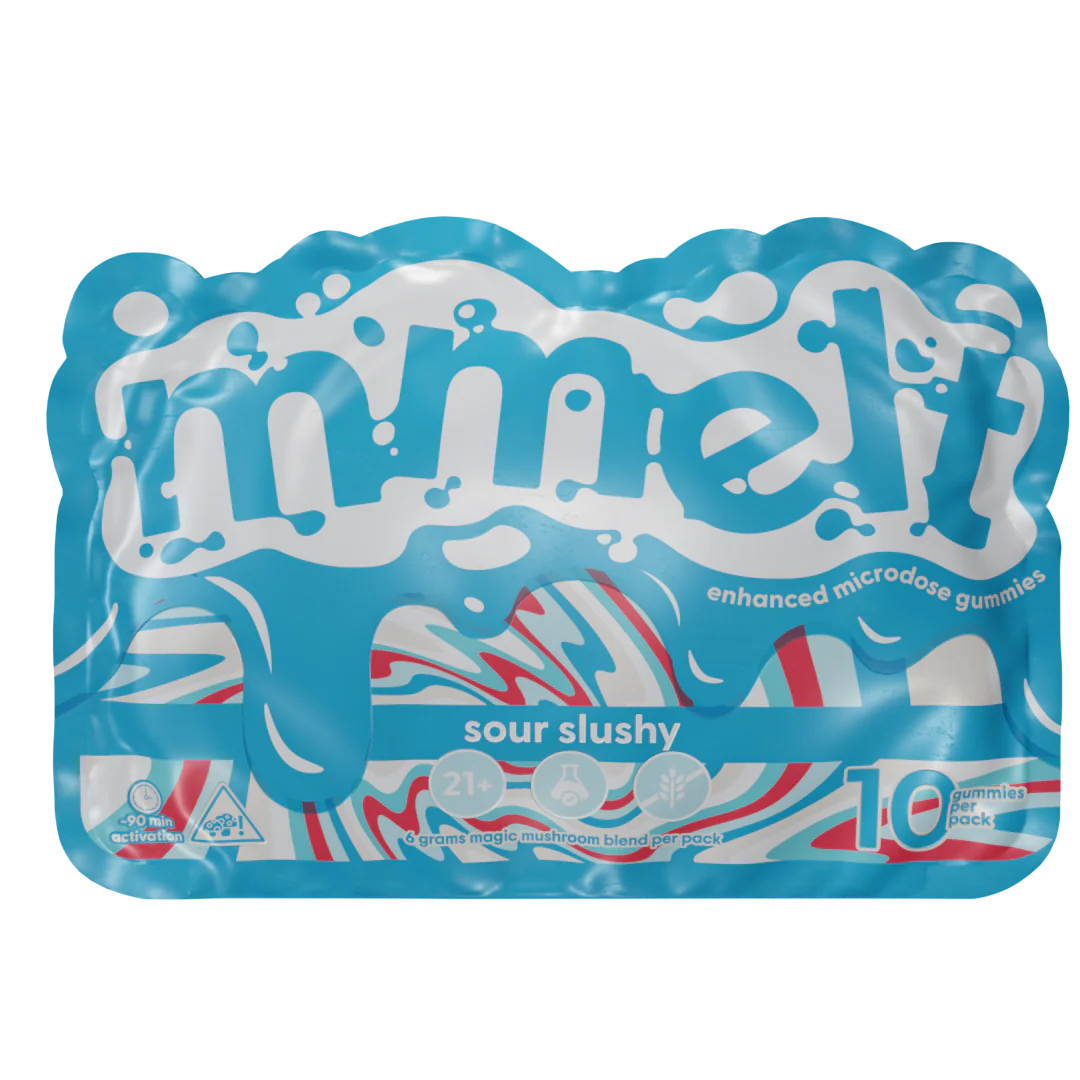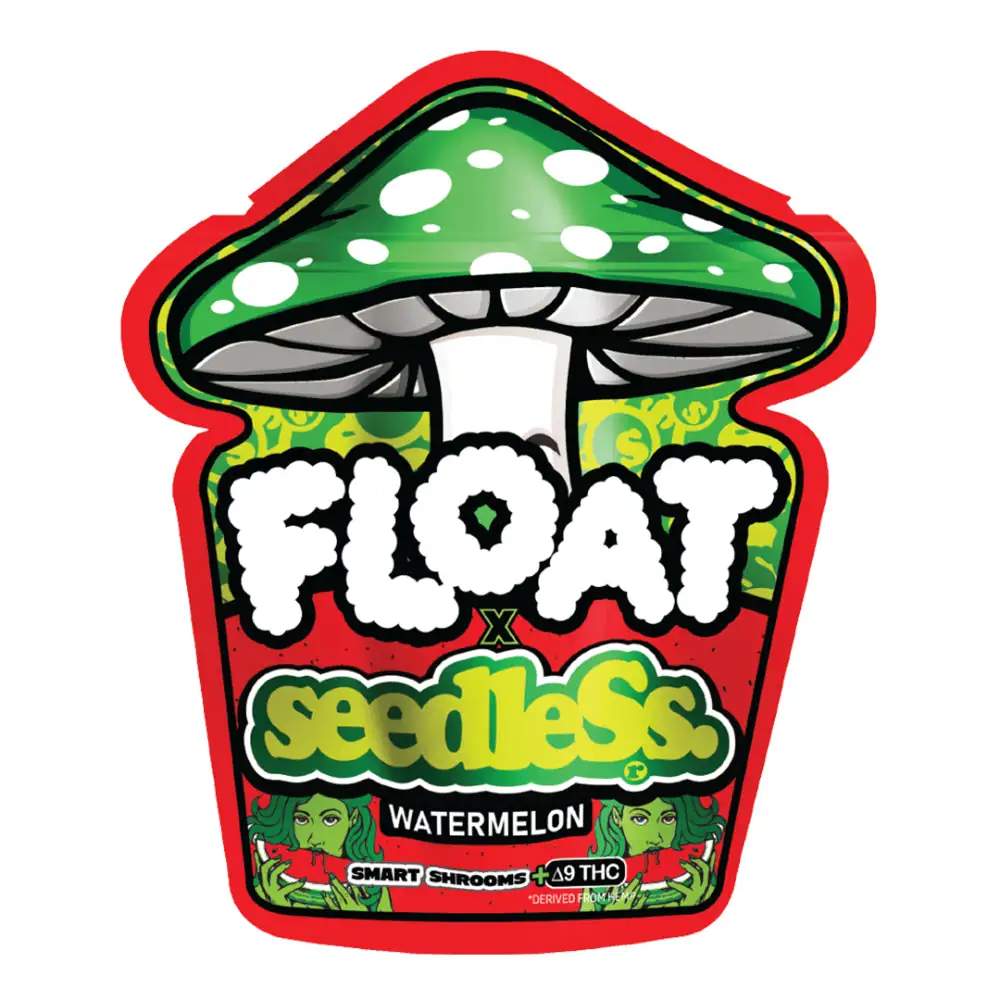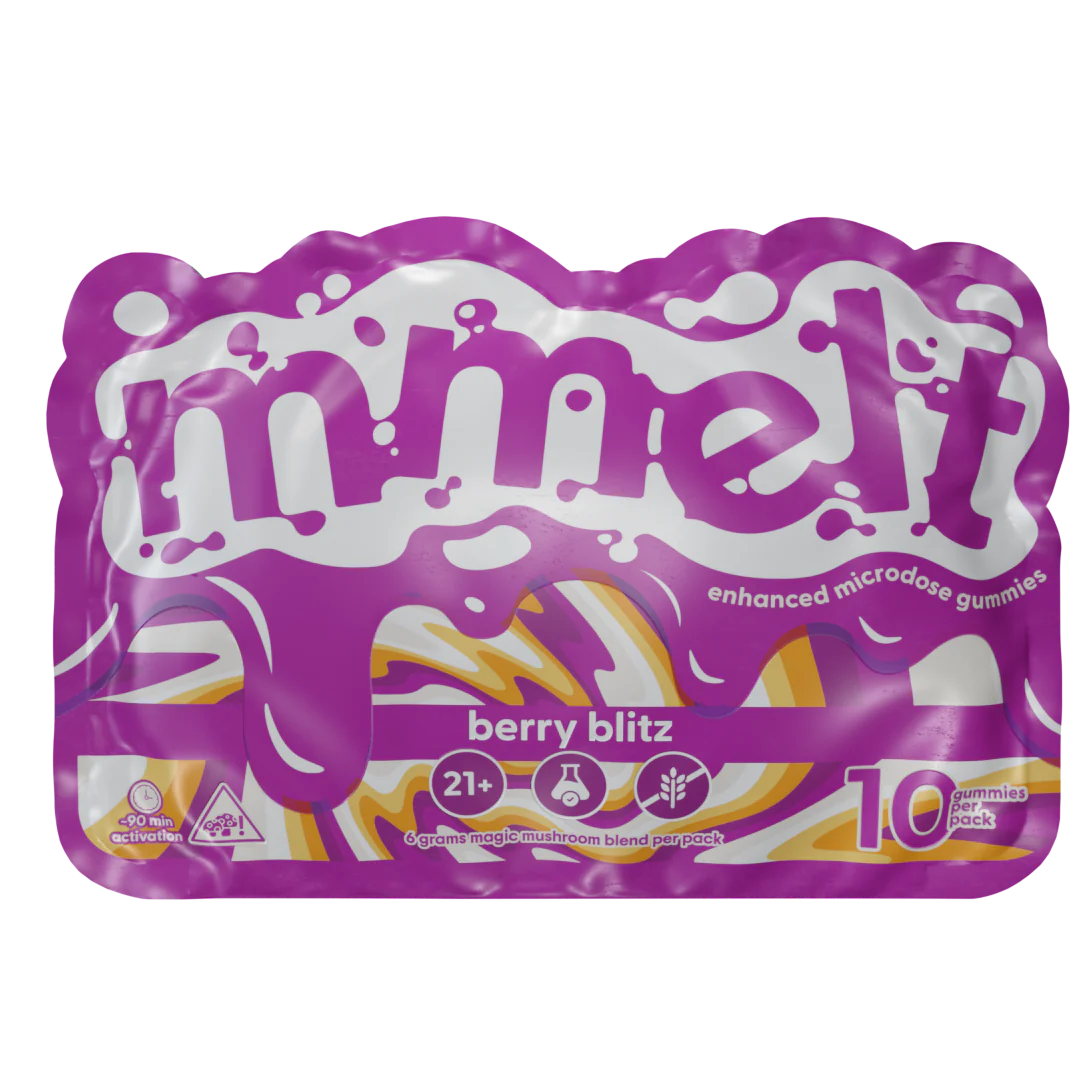Psychedelic mushrooms—often called magic mushrooms—have been gaining wider interest as more people explore their potential for therapeutic use, self-exploration, or recreational experiences. But while many imagine eating dried mushrooms straight from the bag, the world of magic mushrooms goes way beyond plain fungi, extending into mushrooms edible types. Today, there’s a whole variety of edible forms that make consuming psychedelics easier, tastier, and sometimes more discreet.
If you’re curious about the different edible types of magic mushrooms, from chocolates and gummies to baked goods and classic dried mushrooms, this guide breaks down everything you need to know. We’ll cover the forms, how they’re made, what to expect, and safety tips for your edible mushroom experience.
Introduction to Psychedelic Mushrooms and Edibles
Psychedelic mushrooms contain the active compound psilocybin, which the body converts into psilocin—the substance that creates the mind-altering effects. Traditionally, magic mushrooms have been consumed dried or fresh, but their bitter, earthy flavor and chewy texture can put some people off.
Enter edible forms: infused chocolates, gummies, teas, baked treats, and capsules have all emerged as popular alternatives. These not only mask the mushroom flavor but also offer precise dosing and convenience. As psilocybin research advances and legalization spreads in certain regions, edible psychedelics are becoming a key way people explore these substances safely and enjoyably.

What Makes a Psychedelic Mushroom Edible?
When we talk about edible magic mushrooms, we mean not just the raw fungi but any consumable product containing psilocybin mushrooms designed for oral ingestion. Edible forms are made to deliver psilocybin in a controlled, tasty, and often discreet way.
The goal of edible forms is to:
- Make the experience more approachable for beginners.
- Improve flavor and texture.
- Provide standardized doses for better control.
- Offer alternatives for those who dislike chewing raw mushrooms.
Edibles can vary widely—from simple dried mushrooms to elaborate chocolate bars or gummy candies infused with precise amounts of psilocybin extract.
Common Psychedelic Mushroom Species Used for Edibles
Most edible psychedelic products use psilocybin mushrooms from these species:
- Psilocybe cubensis: The most commonly cultivated magic mushroom worldwide. Known for moderate potency and ease of growth.
- Psilocybe semilanceata (Liberty Caps): Smaller, wild-harvested mushrooms with strong effects.
- Psilocybe cyanescens: Known as “wavy caps,” potent but less common in commercial edibles.
These species are typically dried and then processed into edible products, or their active compounds are extracted for infusion into chocolates, gummies, or capsules.
Plain Dried Psychedelic Mushrooms
The simplest edible form is plain dried magic mushrooms. They are typically harvested, dried carefully to preserve potency, and packaged for consumption. While this is the most traditional way to consume psilocybin, it’s also the most “raw” experience.
- Flavor and texture: Earthy, bitter, sometimes unpleasant chewiness.
- Consumption: Can be eaten directly or brewed into teas to reduce flavor intensity.
- Dosage: Requires careful measurement, as potency can vary by batch.
Many users find dried mushrooms cost-effective and authentic but prefer to prepare them into other edible forms for convenience.
Magic Mushroom Chocolates
Chocolate has become one of the most popular ways to consume psilocybin mushrooms. Infusing dried mushroom powder or extract into chocolate serves multiple purposes:
- Masks the strong, bitter mushroom flavor.
- Provides a familiar, easy-to-eat format.
- Slows absorption slightly, creating a smoother onset.
Chocolates can come in bars, bites, or truffles with standardized psilocybin doses. Crafting quality mushroom chocolates involves balancing chocolate flavor with precise mushroom content for a reliable experience.
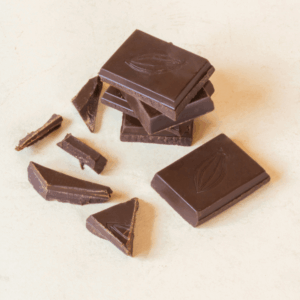
Psychedelic Mushroom Gummies
Gummies are another booming edible format in the psychedelic space. They offer:
- Precise, consistent dosing in each gummy.
- Convenient, discreet consumption.
- Sweet flavor profiles that mask mushroom taste.
Made by infusing psilocybin extract into gummy candy bases, these products appeal to those who dislike the texture of raw mushrooms or the bitterness of powders. Gummies also allow for microdosing, where tiny amounts are consumed for subtle effects.
Baked Goods Infused with Magic Mushrooms
Baked edibles such as cookies, brownies, and muffins infused with psilocybin mushrooms combine the classic psychedelic experience with beloved comfort foods. Baking with magic mushrooms can be as simple as adding finely ground dried mushrooms to recipes or using psilocybin tinctures.
However, high heat can degrade psilocybin, so care must be taken to bake at lower temperatures or add mushrooms after the cooking process to preserve potency.
These edibles are popular for social or recreational use but require attention to dose and effect timing.
Psilocybin Mushroom Teas and Beverages
While not a “solid” edible, teas and other infused beverages are a key part of the edible psychedelic world. Brewing dried mushrooms into a tea extracts the psilocybin and offers an easier-to-digest, less intense flavor experience.
- Effects often onset faster and feel smoother.
- Can be sweetened or flavored with herbs, lemon, or ginger to improve taste.
- Some producers also create psilocybin-infused sodas or shots.
This form appeals to people seeking a gentle, drinkable trip or alternative to chewing mushrooms.
Capsules and Powdered Psilocybin
For those wanting precision and no taste, psilocybin capsules and powders are an excellent choice. These products contain measured doses of mushroom powder or purified extract enclosed in capsules, providing:
- Discreet ingestion.
- Consistent potency.
- Easy microdosing or larger doses.
They’re ideal for newcomers or those looking for a clinical or ritual experience without the sensory baggage of mushroom flavor or texture.
How Psilocybin Edibles Affect the Body Differently
Eating magic mushrooms versus smoking or vaping (which is rare for mushrooms) changes the experience. Oral ingestion means psilocybin must pass through the digestive system and liver before entering the bloodstream. This can:
- Delay the onset of effects by 30–90 minutes.
- Lengthen the overall duration of the trip.
- Create a different subjective feeling, often smoother and more introspective.
Edible formats like chocolates and gummies further modulate absorption speed and intensity, allowing for a more controlled journey.

Dosing Psychedelic Edibles Safely
One of the biggest benefits of edible forms is the ability to control dosage. However, because psilocybin potency varies, and edible forms affect absorption, dosing requires care:
- Start low, especially with edibles, to gauge tolerance and sensitivity.
- Use products with clear, lab-tested potency when possible.
- Avoid mixing different edible formats without knowledge of combined effects.
- Consider microdosing for subtle effects or gradual integration.
Always keep in mind that psychedelic experiences are powerful and should be approached with respect, preparation, and ideally, trusted company.
Storage and Shelf Life of Psychedelic Edibles
Psilocybin is sensitive to heat, light, and moisture, which makes proper storage key to preserving potency in edible forms.
- Store dried mushrooms in airtight containers in cool, dark, dry places.
- Chocolates and gummies should be kept sealed and refrigerated or stored as recommended by manufacturers.
- Avoid prolonged exposure to air or heat to prevent degradation.
Well-stored edibles can last months to years, but potency may slowly decrease over time.
Legal and Safety Considerations
The legal status of psilocybin mushrooms and their edible products varies widely worldwide—from full illegality to decriminalization and medical legalization in select regions. Before purchasing or consuming psychedelic edibles:
- Know your local laws.
- Buy only from reputable sources in legal markets.
- Understand risks and contraindications, especially if combining with medications or health conditions.
Safety also includes mental preparation and setting: the right mindset and environment greatly influence the psychedelic journey.
Benefits of Edible Psychedelic Mushrooms
Edible forms make psilocybin more accessible and enjoyable for many users. They offer:
- Improved taste and palatability.
- More accurate dosing, reducing risk of overconsumption.
- Convenience and discreetness.
- Versatility in consumption styles and social settings.
Moreover, with increasing research supporting psilocybin’s therapeutic potential for depression, anxiety, PTSD, and addiction, edible forms are a promising delivery method for safe, effective experiences.
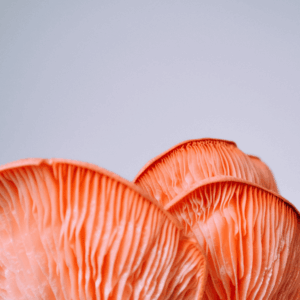
How to Choose the Right Edible Magic Mushroom Product
When selecting psychedelic edibles, consider:
- Potency: Check mg of psilocybin per serving.
- Form: Choose what fits your preference—chocolate, gummies, capsules, etc.
- Ingredients: Look for natural, clean ingredients without unnecessary additives.
- Brand reputation: Prefer lab-tested, transparent producers.
- Personal goals: Recreational, microdosing, or therapeutic use require different dosing strategies.
Starting with lower doses and simple formats helps newcomers build confidence and enjoy positive experiences.
Incorporating Psychedelic Edibles Into Your Routine
Whether exploring microdosing or occasional recreational use, edible magic mushrooms can fit into various lifestyles. Some tips for incorporating them:
- Use edibles in calm, safe environments.
- Allow ample time for effects (2–6 hours depending on dose).
- Keep hydrated and have light snacks handy.
- Consider journaling or meditative practices to integrate experiences.
Remember, psychedelics are tools for growth and exploration—respect and intention amplify their benefits.

Final Thoughts: Mushrooms Edible Types
The landscape of psychedelic mushrooms has evolved beyond dried fungi to a vibrant world of edible products like chocolates, gummies, baked goods, and capsules. These options make psilocybin more accessible, tasty, and easier to dose—helping both novices and seasoned psychonauts find their ideal experience.
Whether you prefer a classic dried mushroom tea or a smooth, chocolate-infused edible, understanding the types of psychedelic edibles empowers you to choose safely and enjoy the profound journeys magic mushrooms can offer. As always, start low, stay informed, and approach your psychedelic adventure with curiosity and respect.
Frequently Asked Questions
1. What species of mushrooms are edible?
When it comes to mushrooms, “edible” refers broadly to any species safe for human consumption. There are thousands of edible mushroom species worldwide, but they vary greatly in flavor, texture, and nutritional profile. Some popular edible culinary mushrooms include:
- Agaricus bisporus — the common white button mushroom, cremini, and portobello varieties.
- Shiitake (Lentinula edodes) — prized for its meaty texture and rich flavor.
- Oyster mushrooms (Pleurotus spp.) — mild and delicate, often used in stir-fries.
- Morels (Morchella spp.) — highly sought after for their nutty taste, but must be cooked well.
- Chanterelles (Cantharellus spp.) — fruity aroma and firm texture.
For psychedelic mushrooms specifically, the most commonly consumed psilocybin-containing species are:
- Psilocybe cubensis — by far the most popular for cultivation and consumption.
- Psilocybe semilanceata (Liberty Caps) — one of the most widespread wild magic mushrooms.
- Psilocybe cyanescens (Wavy Caps) — potent and less commonly cultivated.
It’s important to distinguish edible culinary mushrooms (think: king trumpet mushrooms, morel mushrooms, white mushrooms, and chestnut mushrooms) from psychedelic ones. While culinary mushrooms are non-psychoactive and used as food, psychedelic mushrooms contain psilocybin and cause altered states of consciousness.
2. How can I tell if a mushroom is poisonous?
Identifying poisonous cultivated mushrooms in the wild is notoriously tricky — many toxic species resemble edible ones, and even experts can be fooled. Here are some key tips, but remember: never consume wild mushrooms unless identified with 100% certainty by a mycologist or expert.
- Look for distinctive features: Cap shape, gill color, stem texture, and spore print color can help identification.
- Avoid mushrooms with white gills and a ring on the stem: Many deadly species like Amanita phalloides (Death Cap) share these traits.
- Beware of mushrooms with red coloring on the cap or stem: Some toxic species have bright red features.
- Don’t rely on folklore: Old wives’ tales like “if it peels easily it’s safe” or “insects don’t eat poisonous mushrooms” are unreliable.
For psychedelic mushrooms, the psilocybin-containing species have some identifiable characteristics, like a blue bruising reaction when handled. Still, wild harvesting without deep knowledge carries risks of misidentification.
Bottom line: If you’re interested in edible or psychedelic mushrooms, buy from trusted sources or grow your own from verified spores rather than foraging unless you are an expert.
3. What is the best type of mushroom to eat?
This depends on what you want from your mushroom experience—flavor, texture, nutritional value, or psychedelic effects. For culinary purposes, “best” mushrooms are subjective, but here are some favorites:
- For flavor and versatility: Shiitake and oyster mushrooms are easy to cook and add great taste to dishes.
- For nutrition: Maitake and porcini mushrooms are rich in antioxidants and vitamins.
- For psychedelic effects: Psilocybe cubensis is the go-to choice due to ease of cultivation, moderate potency, and availability.
If your goal is psychedelic experiences, edible forms of psilocybin mushrooms such as chocolates or gummies might be “best” for taste and ease of use, while dried whole mushrooms offer the most natural form. Choosing the “best” depends on your familiarity, dose control needs, and personal preference.
4. What kind of mushrooms are sold in grocery stores?
Whether you’re cooking pasta dishes for the family or you’re a vegan looking for meaty replacements, most grocery stores carry a few staple edible mushrooms. These include:
- White button mushrooms: Mild flavor, used widely in salads, soups, and stir-fries.
- Cremini mushrooms: A brown variant of white buttons, with a deeper flavor. Often misspelled as ‘crimini mushrooms.’
- Portobello mushrooms: Large, meaty mushrooms often used as burger substitutes. Portobello mushroom caps are often consumed in place of steak.
- Shiitake mushrooms: Sometimes fresh or dried, valued for their umami.
- Oyster mushrooms: Occasionally found fresh or dried in specialty stores.
- Enoki mushrooms: Thin, long-stemmed mushrooms used in Asian cooking.
- King oyster mushroom: Thick, meaty texture stems with a mild, slightly sweet flavor; excellent for grilling, roasting, or slicing as a seafood substitute.
- Maitake mushrooms: Also known as “Hen of the Woods,” these mushrooms have a rich, earthy flavor and a delicate, feathery texture. They’re great sautéed or roasted and are prized for their potential health benefits, including immune support.
- Lobster mushrooms: Bright orange-red with a firm texture and seafood-like flavor reminiscent of lobster. These mushrooms are often used in soups, stews, and sautés for their unique taste and vibrant color.
It’s very rare to find psychedelic mushrooms or medicinal mushrooms sold in conventional grocery stores, due to legal restrictions in most countries. However, in areas where psilocybin has been decriminalized or legalized for medical use, specialized dispensaries or licensed vendors may offer psychedelic mushrooms and edible products like chocolates or gummies.
5. Are Magic Mushroom Edibles Safe to Eat?
When sourced responsibly, edible psilocybin products are generally safe for healthy adults. That said, safety depends heavily on:
- Dosage control: Edibles can be potent, so start with a low dose and wait to feel effects before consuming more.
- Product quality: Buy from reputable vendors that provide lab-tested products free from contaminants.
- Personal health: Avoid if pregnant, nursing, or with certain medical conditions or psychiatric disorders.
- Setting and mindset: Consume in a safe, comfortable environment with trusted people, especially if you are new to psychedelics.
Unlike raw dried mushrooms, edibles often allow better dosage precision and reduce the chance of stomach upset or nausea.
6. How Do Edible Forms Affect the Onset and Duration of Magic Mushroom Trips?
Edibles change the way psilocybin is absorbed and metabolized. For example:
- Chocolates and gummies can slow digestion, leading to a more gradual onset—usually between 30 minutes to 2 hours.
- Teas may act faster, sometimes within 15–45 minutes, because psilocybin is already dissolved.
- Baked goods may vary depending on how much heat exposure psilocybin has endured.
Overall, edibles tend to lengthen the trip duration compared to eating raw mushrooms, with effects lasting 4 to 6 hours or more. The slow, steady onset also tends to produce a smoother, less intense peak for many users.
7. Can I Make My Own Magic Mushroom Edibles?
Yes! Many psychonauts make homemade edibles to control dosing, flavor, and quality. Common homemade recipes include:
- Magic mushroom chocolate bars: Melt quality chocolate, mix in finely ground dried mushrooms or psilocybin extract, and let set.
- Mushroom teas: Steep dried mushrooms in hot water with lemon or ginger to mask flavor.
- Baked goods: Add powdered mushrooms to brownies, cookies, or muffins, but bake at low temperatures to avoid psilocybin degradation.
- Capsules: Fill empty capsules with powdered dried mushrooms for tasteless dosing.
Making your own requires precise measurements and patience but offers the best control over your experience.
8. How Should I Store Magic Mushroom Edibles?
Storage affects potency and safety:
- Dried mushrooms: Keep in airtight, opaque containers, away from moisture and light.
- Chocolates and gummies: Store in sealed containers, preferably refrigerated, to prevent melting and degradation.
- Baked goods: Store in airtight containers and consume within a few days or freeze for longer storage.
Proper storage extends shelf life and preserves psilocybin potency.
9. Are king oyster mushrooms edible?
Yes, king oyster mushrooms (Pleurotus eryngii) are absolutely edible—and delicious. They’re known for their thick, meaty stems and mild, slightly nutty flavor that deepens when cooked. Because of their dense, chewy texture, they’re often used as a plant-based substitute for scallops, pulled pork, or other proteins in vegan and vegetarian dishes.
10. Is lion’s mane safe?
Yes, lion’s mane mushrooms (Hericium erinaceus) are considered safe to eat and are even celebrated for their potential cognitive and neurological benefits. These shaggy, white mushrooms are not only edible but also used in both culinary and supplement forms—often found fresh, powdered, in capsules, or as tinctures.




